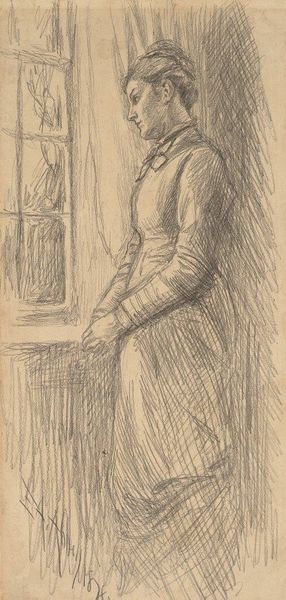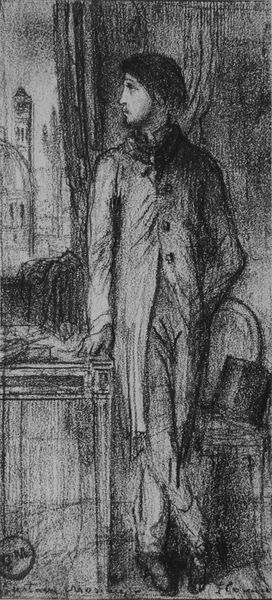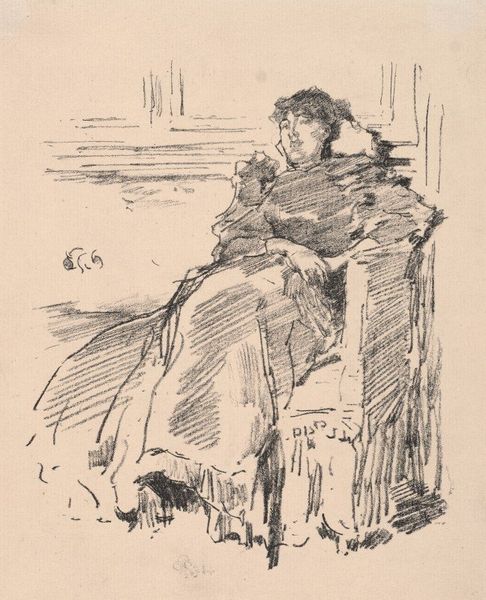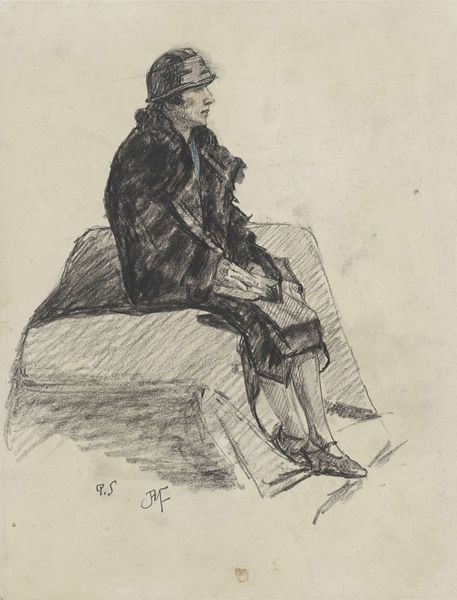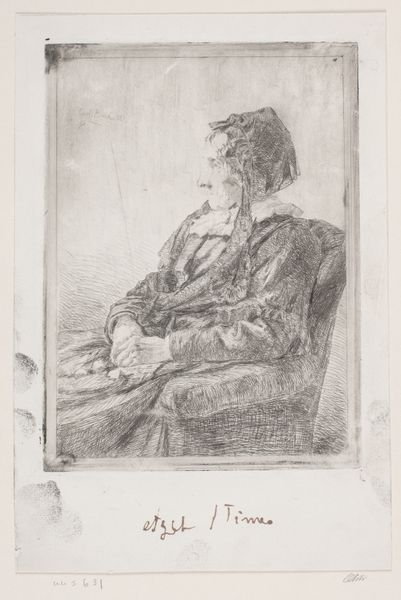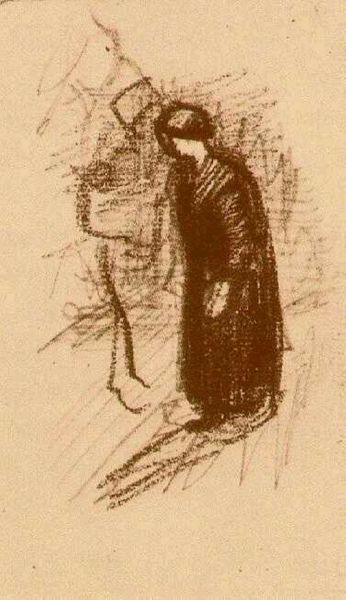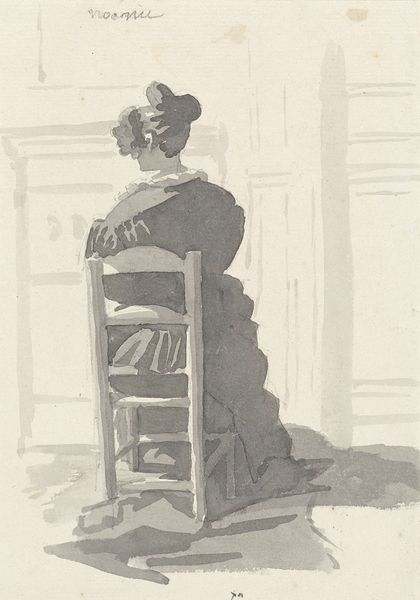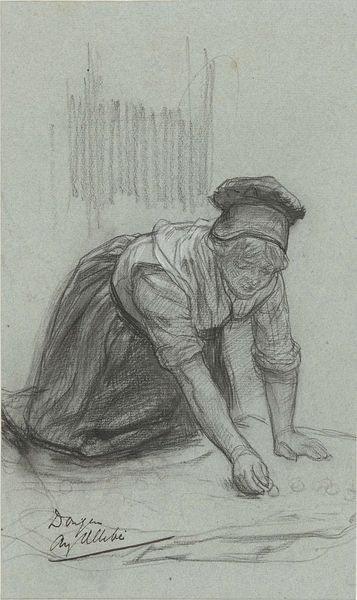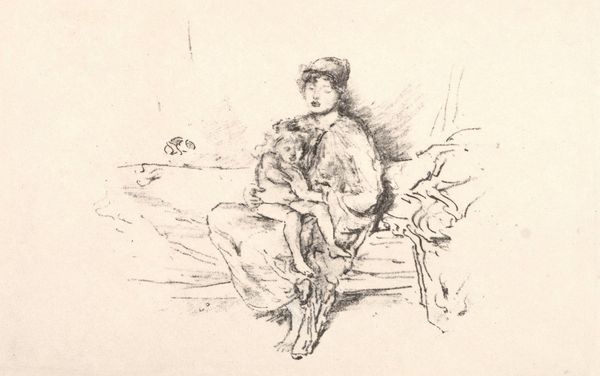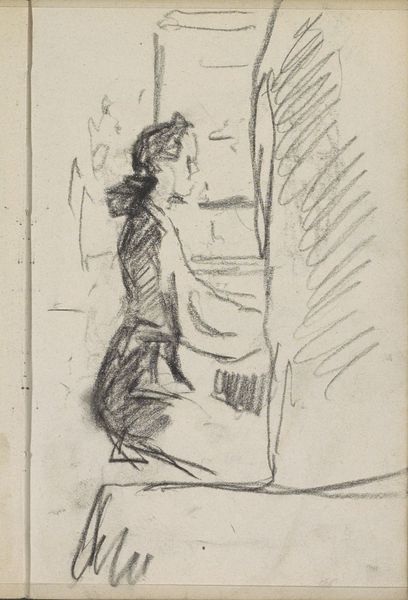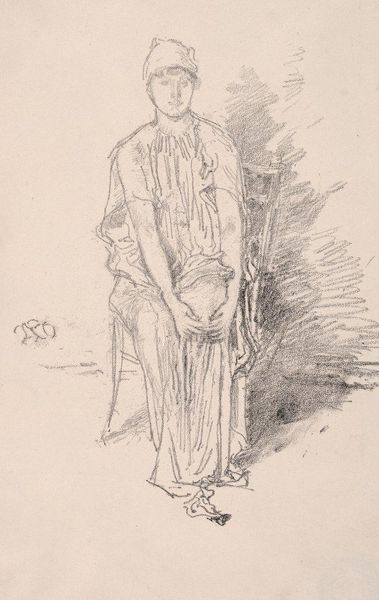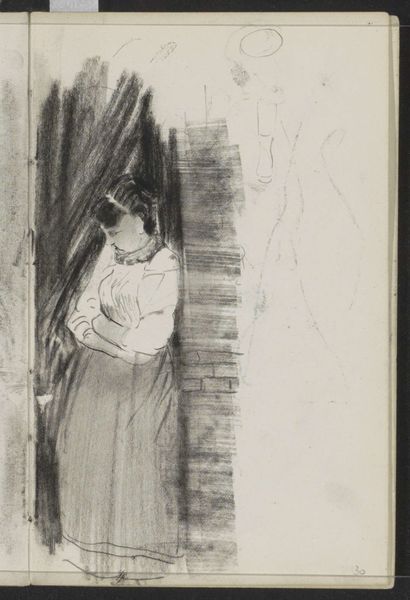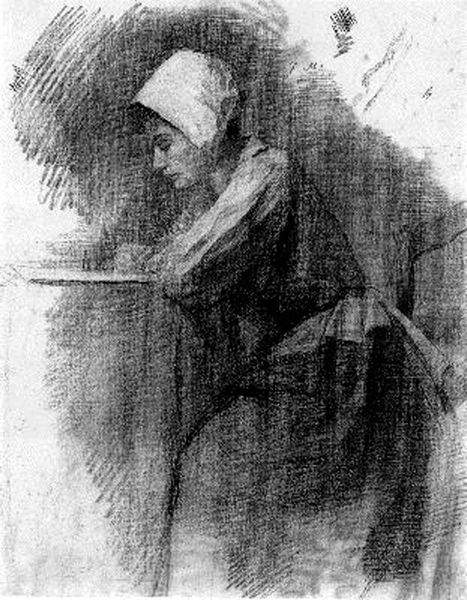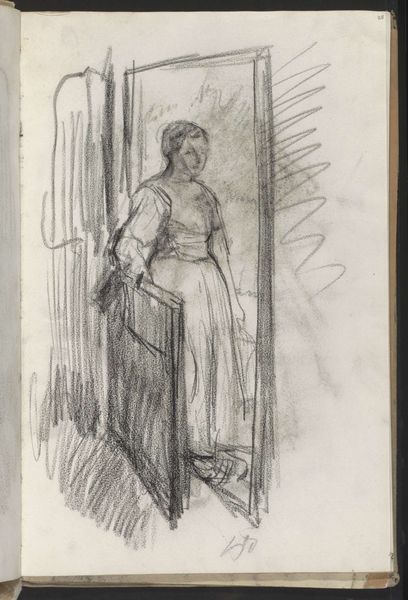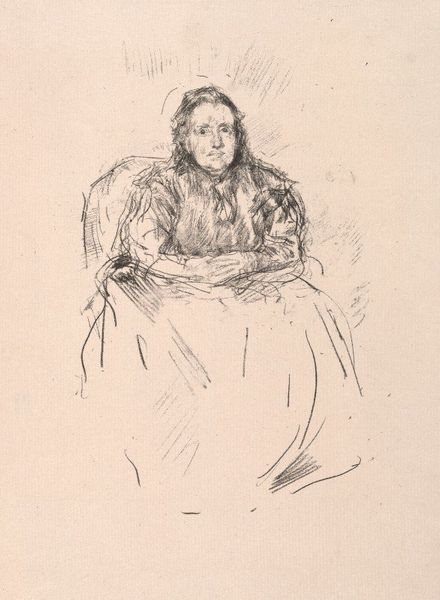
drawing, lithograph, print, graphite, pen
#
portrait
#
drawing
#
facial expression drawing
#
lithograph
# print
#
pencil sketch
#
figuration
#
portrait reference
#
idea generation sketch
#
sketchwork
#
pen-ink sketch
#
france
#
limited contrast and shading
#
line
#
graphite
#
pen
#
portrait drawing
#
pencil work
#
realism
#
initial sketch
Dimensions: 17 11/16 x 12 7/16 in. (44.93 x 31.59 cm) (sheet)
Copyright: Public Domain
Curator: "Le baromètre," dating back to 1858 by Paul Gavarni, a lithograph housed here at the Minneapolis Institute of Art. It strikes me immediately with its emphasis on line and form, an illustration built on meticulous shading to describe depth, dimension, and mood. What’s your first reaction? Editor: I'm captivated. The lean of the man’s head and the squint, like he’s arguing with those paintings on the wall. You know, half the fun of visiting a museum is making up stories for the people in the art. What do you think he’s thinking, this character staring up at the wall? Curator: The gaze directs the eye toward the displayed portraits; each canvas provides another framework with which to examine identity through line, particularly within a representational work such as this. Do you observe how the composition draws the viewer through this careful layering of pictorial planes? Editor: Absolutely. His face, the curve of the wall, those oval portraits – it’s a stage set. The whole composition is a kind of theatre, like he's reacting to players on a stage or judging his own reflection in a mirror—it’s as if we, too, are behind the curtain, complicit observers to the act. Curator: Precisely. The semiotic implications are profound, using these minimalist lithographic lines—consider the artist’s utilization of implied rather than stated forms…what appears on the surface as an amusing satirical image has an intricate internal grammar of form, depth, and, shall we say, implication. Editor: Right? This fellow could be contemplating an identity crisis for all we know. Gavarni's created this ambiguous emotional tableau that draws you in. Curator: Which is the core of great art, the ability to continuously generate readings, interpretations. This seemingly straightforward illustration possesses significant structural complexities. Editor: I agree. This image becomes less about the reading and more about the viewing, less a barometer of external states, and more about an internal drama.
Comments
No comments
Be the first to comment and join the conversation on the ultimate creative platform.
